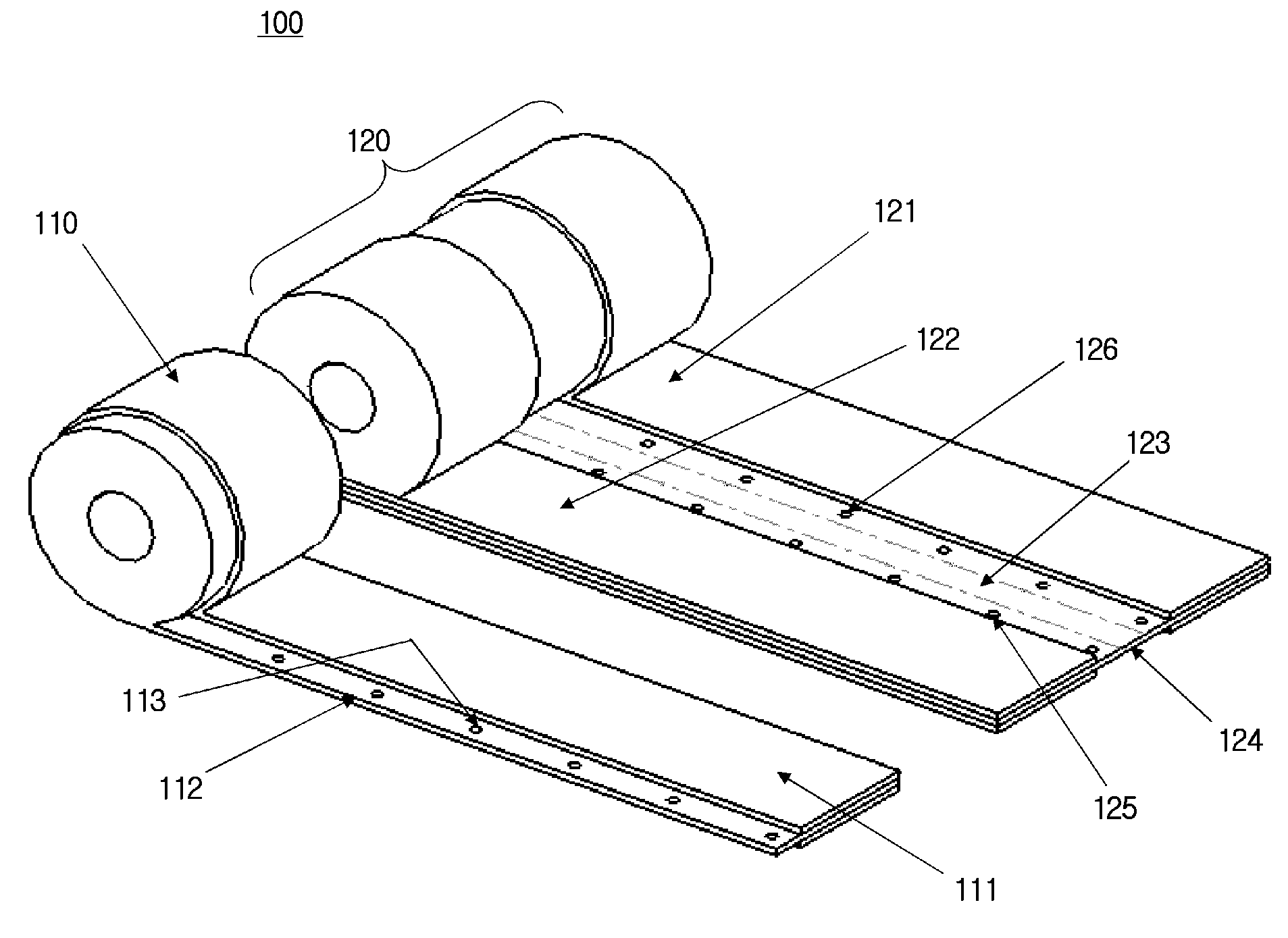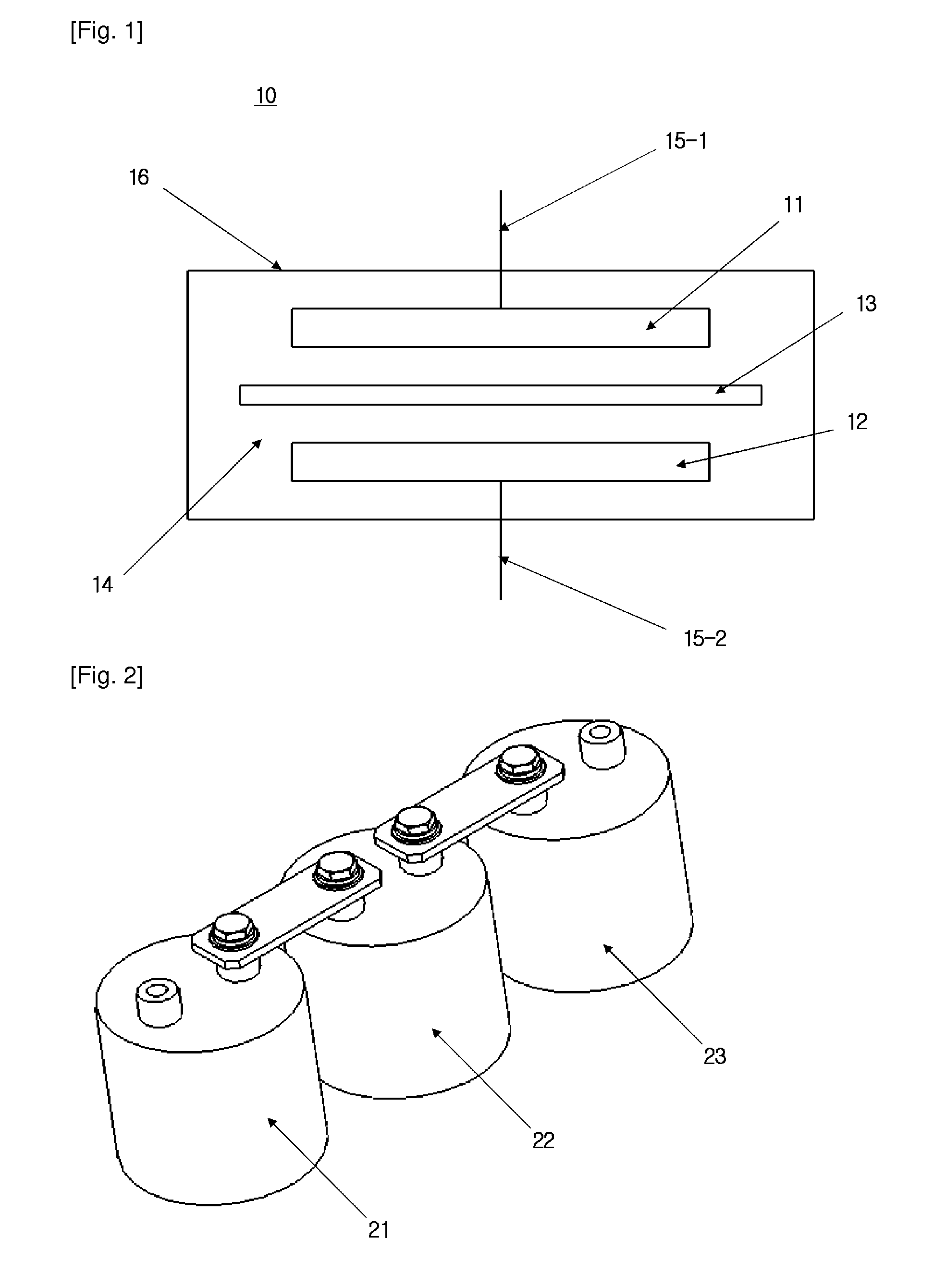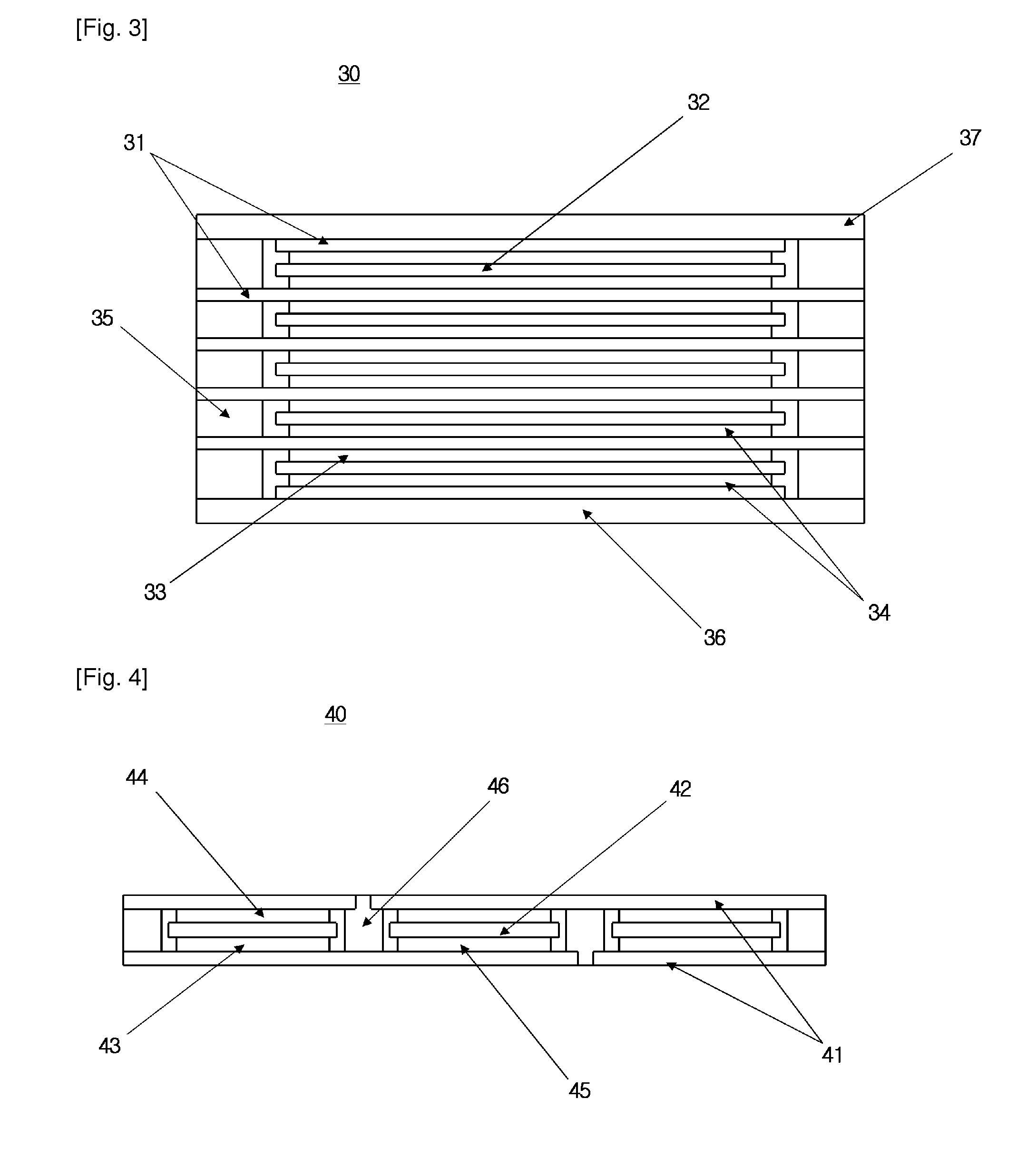Electrochemical cell having quasi-bipolar structure
a cell and bipolar technology, applied in the direction of cell components, wound/folded electrode electrodes, sustainable manufacturing/processing, etc., can solve the problems of difficult to isolate the electrolyte of neighboring unit cells securely for a long time under various operation environments, current leakage occurs between the unit cells, etc., to achieve less pressure, simple structure, and effective isolation
- Summary
- Abstract
- Description
- Claims
- Application Information
AI Technical Summary
Benefits of technology
Problems solved by technology
Method used
Image
Examples
Embodiment Construction
[0101]Hereinafter, specific embodiments will be described in detail with reference to the accompanying drawings.
[0102]FIG. 8 is a perspective view illustrating electrodes of an electrochemical cell having a quasi-bipolar structure according to an exemplary embodiment.
[0103]Referring to FIG. 8, the electrochemical cell 100 of the current embodiment includes a mono polar electrode 110 and a quasi-bipolar electrode 120.
[0104]The mono polar electrode 110 includes a current collector 112 and active material layers 111 formed on the current collector 112 and having one polarity.
[0105]The quasi-bipolar electrode 120 includes a current collector 124, and positive and negative active material layers 121 and 122 that are formed on the current collector 124 and spaced apart from each other. An electrolyte isolation part 123 is formed at a current collector extension part between the positive and negative active material layers 121 and 122 for installing an electrolyte isolation barrier wall on...
PUM
| Property | Measurement | Unit |
|---|---|---|
| voltage | aaaaa | aaaaa |
| thickness | aaaaa | aaaaa |
| thickness | aaaaa | aaaaa |
Abstract
Description
Claims
Application Information
 Login to View More
Login to View More - R&D
- Intellectual Property
- Life Sciences
- Materials
- Tech Scout
- Unparalleled Data Quality
- Higher Quality Content
- 60% Fewer Hallucinations
Browse by: Latest US Patents, China's latest patents, Technical Efficacy Thesaurus, Application Domain, Technology Topic, Popular Technical Reports.
© 2025 PatSnap. All rights reserved.Legal|Privacy policy|Modern Slavery Act Transparency Statement|Sitemap|About US| Contact US: help@patsnap.com



